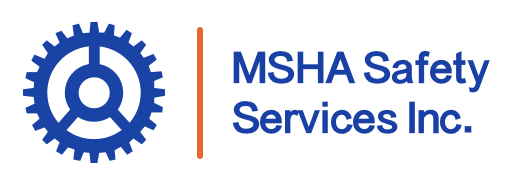Ensuring ground support safety in mining operations is critical for worker protection, operational efficiency, and regulatory compliance. Scaling, inspections, and training are three essential components that contribute to a safer mining environment by preventing rockfalls, maintaining infrastructure integrity, and educating workers on best practices. This guide explores the key aspects of each to help mining professionals enhance safety in their operations.
Scaling and Rockfall Prevention in Mining
Scaling is the process of removing loose rock from mine walls and ceilings to prevent hazardous rockfalls. It is a fundamental part of ground support safety, as unaddressed loose rock can lead to severe injuries and equipment damage. Scaling can be done manually with scaling bars or mechanically using hydraulic scaling machines, depending on the mine’s depth and structure.
Best practices for scaling include:
- Conducting regular inspections to identify hazardous rock formations.
- Using appropriate tools and protective equipment to minimize risks.
- Implementing controlled scaling techniques to prevent accidental dislodgement of larger rock masses.
Types of Ground Support Systems Used in Mining Operations
To enhance safety and stability, mining operations rely on various ground support systems, including:
- Rock bolts: Used to reinforce rock structures and prevent collapses.
- Shotcrete: A spray-applied concrete mixture that provides additional wall support.
- Mesh and wire reinforcements: Used in combination with other support methods to contain loose rock.
- Timber and steel supports: Applied in certain mining conditions to stabilize tunnels and shafts.
Selecting the right ground support system depends on factors such as mine depth, rock type, and anticipated loads.
The Role and Process of Ground Support Inspections
Ground support inspections are essential for identifying potential hazards and ensuring the effectiveness of existing safety measures. These inspections typically involve:
- Visual assessments of rock conditions and support systems.
- Load testing of support structures to verify their integrity.
- Documentation of wear and tear to schedule necessary repairs or reinforcements.
Regular inspections not only prevent accidents but also extend the lifespan of mining infrastructure.
Advanced Technologies in Ground Support and Safety Inspections
Modern mining operations increasingly rely on advanced technologies to improve ground support safety. Innovations include:
- LiDAR scanning: Provides high-resolution images of underground conditions for detailed safety assessments.
- Remote sensing drones: Allow for inspections in hard-to-reach or hazardous areas.
- Automated monitoring systems: Continuously track environmental factors such as rock movement and pressure buildup.
Adopting these technologies enhances efficiency and minimizes the risk of human error in safety assessments.
Safety Regulations and Standards for Ground Support in Mining
Strict safety regulations govern ground support systems to ensure miner protection. Regulatory bodies such as MSHA (Mine Safety and Health Administration) and OSHA (Occupational Safety and Health Administration) set guidelines for:
- Minimum requirements for rock reinforcement methods.
- Mandatory inspection frequencies and reporting procedures.
- Worker safety protocols, including personal protective equipment (PPE) usage.
Complying with these regulations reduces legal risks and promotes a safer mining environment.
How to Ensure Compliance with Ground Support Safety Regulations
Mining companies must take proactive steps to ensure compliance, including:
- Conducting regular audits of ground support systems and safety practices.
- Keeping detailed records of inspections, repairs, and training sessions.
- Engaging with regulatory bodies to stay updated on evolving safety requirements.
A strong commitment to compliance helps avoid penalties and fosters a culture of safety within the organization.
Training Requirements and Best Practices for Ground Support Safety
Effective training is key to ensuring miners understand the risks associated with ground support and follow best practices. A good example of specialized training is offered by MSHA Safety Services, which provides a variety of safety courses tailored to mining professionals. These courses cover essential topics such as hazard recognition, emergency response, and proper scaling techniques. By offering both in-person and online training options, MSHA Safety Services helps miners stay up-to-date with safety regulations and industry standards. Regularly attending these courses not only ensures compliance with safety laws but also enhances the overall safety culture within mining operations.
The Impact of Proper Ground Support on Mining Safety and Productivity
Effective ground support safety measures directly impact mining productivity by reducing downtime due to accidents or structural failures. Benefits include:
- Improved worker confidence and morale.
- Enhanced equipment longevity through stable operating conditions.
- Reduced operational costs associated with unexpected repairs and legal liabilities.
Investing in scaling, inspections, and training ultimately leads to safer and more efficient mining operations.
Common Ground Support Failures and How to Address Them
Despite preventive measures, some common ground support failures include:
- Bolt failures: Caused by improper installation or excessive stress.
- Shotcrete detachment: Due to inadequate adhesion or environmental factors.
- Structural collapses: Resulting from unaddressed geological instabilities.
Addressing these failures requires timely inspections, proper installation techniques, and reinforcement upgrades when necessary.

Risk Management and Ground Support Safety in Mining Environments
A proactive risk management strategy includes:
- Conducting hazard assessments before beginning mining operations.
- Implementing real-time monitoring systems to detect potential safety threats.
- Developing emergency response plans in case of structural failures or collapses.
Identifying and mitigating risks early significantly enhances worker safety and mine stability.
Strengthening Ground Support Safety Through Scaling, Inspections, and Training
A comprehensive approach to ground support safety involves consistent scaling, inspections, and training. By adhering to best practices, utilizing modern technology, and following regulatory guidelines, mining operations can create a safer and more productive working environment for all employees.

